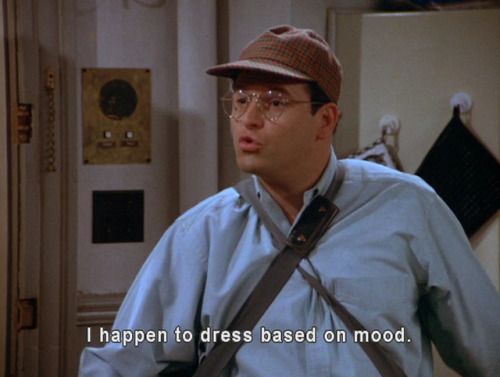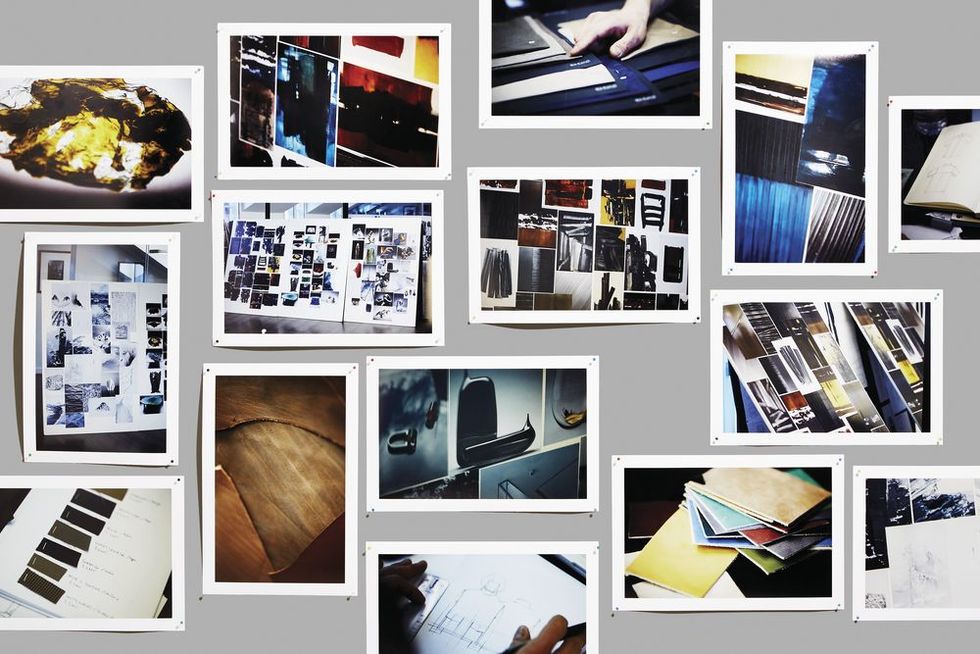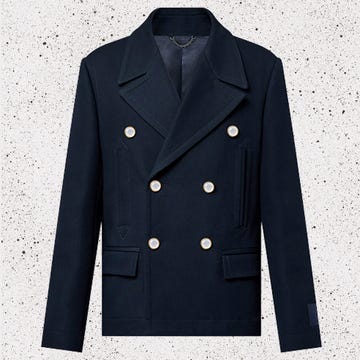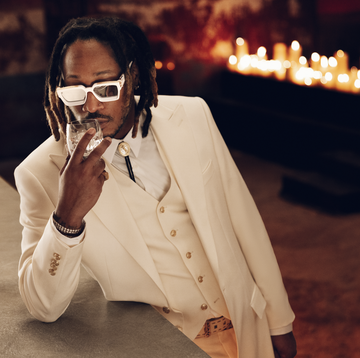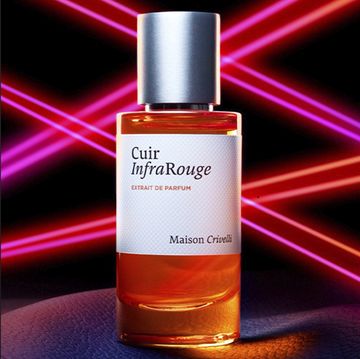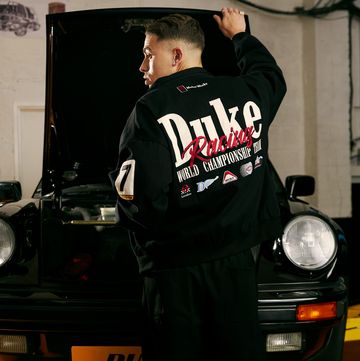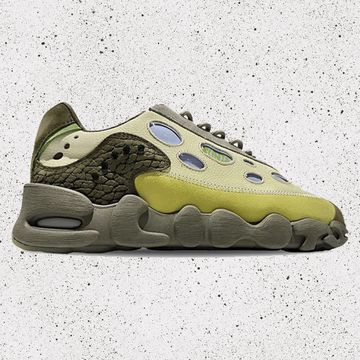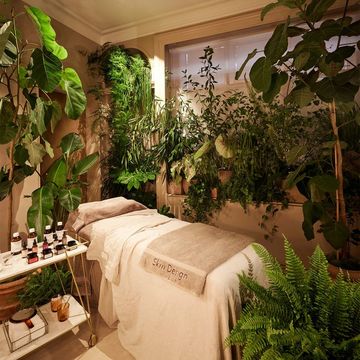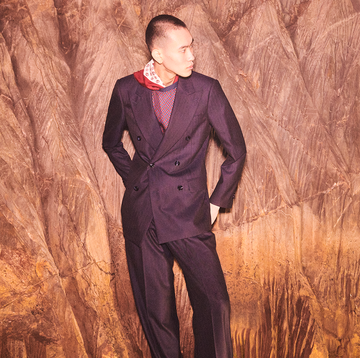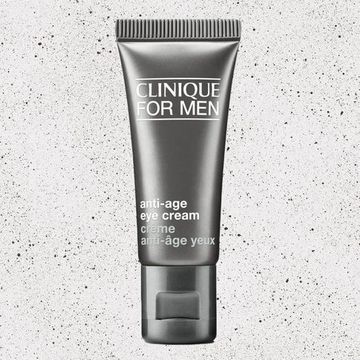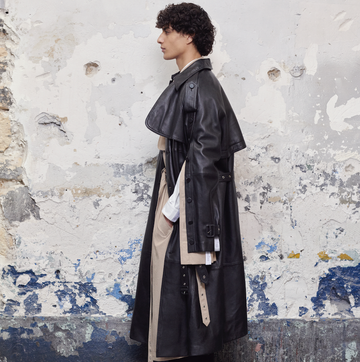Won’t someone think of the Pinterest boards! Now that every event in every schedule has been cancelled, they wait in limbo; jam-packed with the wedding cakes, houseplant arrangements and bathroom suites that could have been. At the end of 2019, Pinterest had 335 million users – an increase of 70 million on the same time the year before – with the average user skewing just south of 40. The idea of ‘curation’ clearly appeals to the millennial generation, and savvy brands have caught wind.
Traditionally, the ‘mood board’ was a design tool; a collage where someone who was in the process of creating something could collate things that might inform the thing they were trying to create, and make sure it carried the intended ‘mood’. A board could feature a swatch of carpet, a cutting of an old Armani ad, a pebble collected on a particularly evocative day at the beach; anything. In the Autumn/Winter 2015 issue of Esquire’s Big Black Book, a series of menswear designers talked us through their mood boards for the season, and how the various elements had manifested in the actual clothes.
“The left-hand board is all works by Pierre Soulages,” explained Alessandro Sartori, the then creative director of Berluti, of his mood board for the season, “from which we took inspiration for colour and treatment. I love the vibrancy, and the almost violent use of colour blended with black. The glossy, transparent glasses inspired a very light kangaroo leather shirt-weight jacket in the collection that has a transparent, ceramic-like treatment.”
The mood board is still the creative tool it has always been, but traditionally it was an inward thing – something one kept relatively quiet, so as not to suggest the resulting clothing collection (for example) relied too heavily on pre-existing ideas. Now, the mood board is a marketing tool.
“Sporty & Rich is a mood board for life, specifically my life,” says Emily Oberg, who founded the luxury casualwear brand in 2014. “It's where I keep an archive of images that I can reference in my work, and my future. They are mostly aspirational images – places I want to go, houses I want to buy, cars I want to own— images of my dream life. I love beauty in every form. I'm obsessed with beautiful things, people and places, who isn't? Some might say it's superficial, I think it's honest.”
Sporty & Rich makes jersey sweats, casual sportswear and accessories for women, mainly, but there are men’s and unisex pieces, too. Sweaters are oversized, cut from pastel cottons and collegiately emblazoned with phrases such as ‘Wellness’, ‘Health is Wealth!’ and ‘Be nice. Get lots of sleep. Drink plenty of water.’ It is the kind of thing a Hadid might wear with New Balance 990s, on a coffee-run.
“I started the IG page before anything,” remembers Oberg. “It was a way to manifest what I wanted, I guess. On Instagram, anyone can be anything. You can create a brand out of thin air. You eventually need the skill and passion to turn it into something more tangible, but the success of the brand was built off of the Instagram page. People know Sporty & Rich first for the mood board, and now for the clothes.”
The Sporty & Rich mood board is populated with vintage advertisements, editorial fashion shoots and architectural exposés, among the odd shot of an S&R garment on a model, or occasionally, Oberg herself. At time of writing, a quick scan offers aged ads from Hermes, Patek Phillippe, Moschino; Slim Aarons-style photos of assorted riviera; and street-style shots of celebrities from other eras, including Brigitte Bardot, Michael Jordan and John F Kennedy Jr. True to its name, images either convey something that is sporty, something that is rich, or something that is both.
Oberg uses various sources, and tries not to overthink before posting – the main proviso is that she likes an image – but ideally it won’t have been seen too much before. “There are so many mood board accounts on IG,” she says, “if you want to stand out your content needs to be different. Otherwise why is anyone following you?”
“Public mood boards allow brands to associate themselves with any imagery, without having to pay for it, as regally as they want,” says Freddy Taylor, an art director at advertising agency Wieden + Kennedy. “Then there’s the behind-the-curtain feel they give to the public, as if you’re gaining access to the studio’s walls or private Pinterest boards – albeit still highly curated/considered. And, as attention is the new economy, it’s not really surprising that brands have reacted to people spending hours scrolling through visual stim[ulation] blogs/instas [sic] by creating more spaces that allow them to further deepen the connection they have with their followers.”
The direct conversation between brand and consumer has allowed ‘niche’ to flourish. In fact, it could be argued that it is harder for big brands to navigate the potentially treacherous waters of social media – to appear at once authentic, inclusive, interesting and global. (As WWD recently reported, in the current climate, brands can’t post the usual before-Coronavirus content, they need to display empathy. Cue Michael Kors folding laundry.)
When Rowing Blazers was founded, as an outfitter to oarsman, there were few brands more niche. But it has since become the go-to outfitter for fans of all manner of irreverent prep. The brand aesthetic – as demonstrated by the Instagram account @rbmoodboard – is both specific and wide-ranging. A school-age Benedict Cumberbatch in rugby kit? An illustration of the dodo? A Sports Illustrated cover? Check, check, check. Seemingly disparate, but all in line with the Rowing Blazers vibe, somehow.
“Rowing Blazers is a very eclectic brand,” says founder Jack Carlson. “I think if someone just hears the name and isn’t familiar with the brand, they might get a very narrow idea of what it’s all about.” The name could potentially pigeon-hole Rowing Blazers in people’s minds, but the mood board allows the brand to define itself more widely. “The influences and inspiration are much broader than [rowing]; the world of the brand is much more expansive. Ligne-claire cartoons and orders of chivalry; old school hip-hop and stained glass; vintage Jaguar and Heuer; Mad Men and Babar; the American diner aesthetic, MTV, and the Concorde; pre-Columbian art and archaeology; Tom Wolfe, Sonic the Hedgehog, Jorge Campos, and Miles Davis. I think by giving people a glimpse into my mood board, we let people see that.”
Admittedly, Rowing Blazers and Sporty & Rich swim in similar pools. Both favour Eighties fashion, moneyed nostalgia and unorthodox, preppy style icons. (Jerry Seinfeld features on both.) But fashun-ier fashion brands do the mood board thing, too. Simon Porte Jacquemus, the French designer who has put his Provençal heritage (and his own exceedingly handsome face) at the centre of his aesthetic, is suitably prolific on Instagram. Product shots and campaign imagery are interspersed with Hockney prints, Hans Feurer photographs and shots of Porte Jacquemus at leisure: lounging in a pool, making pizza, taking a bath, hitting the beach, petting a donkey.
“I’m a blogger, I have no shame to say that,” Porte Jacquemus told Esquire last year. “I’m sharing my life and sharing something of me every day. And with Jacquemus of course I’m selling clothes and an aesthetic. But for me it’s the same link that I have with other people. That’s my culture.” Porte Jacquemus’s bucolic vibe may well be truthful, but it informs his product, and in terms of marketing, it is a tapestry with which consumers can identify. (Taking the post-Corona energy to its maximum, Jacquemus recently unveiled its new campaign, featuring Bella Hadid, shot entirely over FaceTime by Pierre-Ange Carlotti.)
Elsewhere, @paulsmith – a feed of pictures all shot by the designer himself – has only marginally fewer followers than @paulsmithdesign (391k), the brand’s official account. Similarly, Emily Adams Bode’s ‘personal’ account offers insight into the flea market finds that inform her eponymous brand’s aesthetic. And though images on the Louis Vuitton Instagram feed offer scant insight into machinations of the company, Virgil Abloh’s ‘gram essentially serves as a window into the menswear designer’s process.
The public mood board forms part of the wider concept of ‘content’ – a marketing tool that is too nebulous for me to adequately define (essentially it conveys a brand message via supplementary, editorial-style words, pictures, video or audio as a means of ‘soft marketing, I think) but it is somehow vaguer. It seems to throw up more questions than answers. Is the mood board the thing, or the supplement to the thing? Does each picture serve a tangible purpose, or is it only relevant when placed alongside others? Do I actually like vintage print ads, Nineties tennis wear and screenshots of Don Draper, or do I simply like that someone cool and interesting has put them all in one place for me? And moreover, is a mood board curated, or appropriated?
Who knows. But it certainly sounds like the kind of thing I should be looking at.
Like this article? Sign up to our newsletter to get more delivered straight to your inbox.
SIGN UP
Need some positivity right now? Subscribe to Esquire now for a hit of style, fitness, culture and advice from the experts
